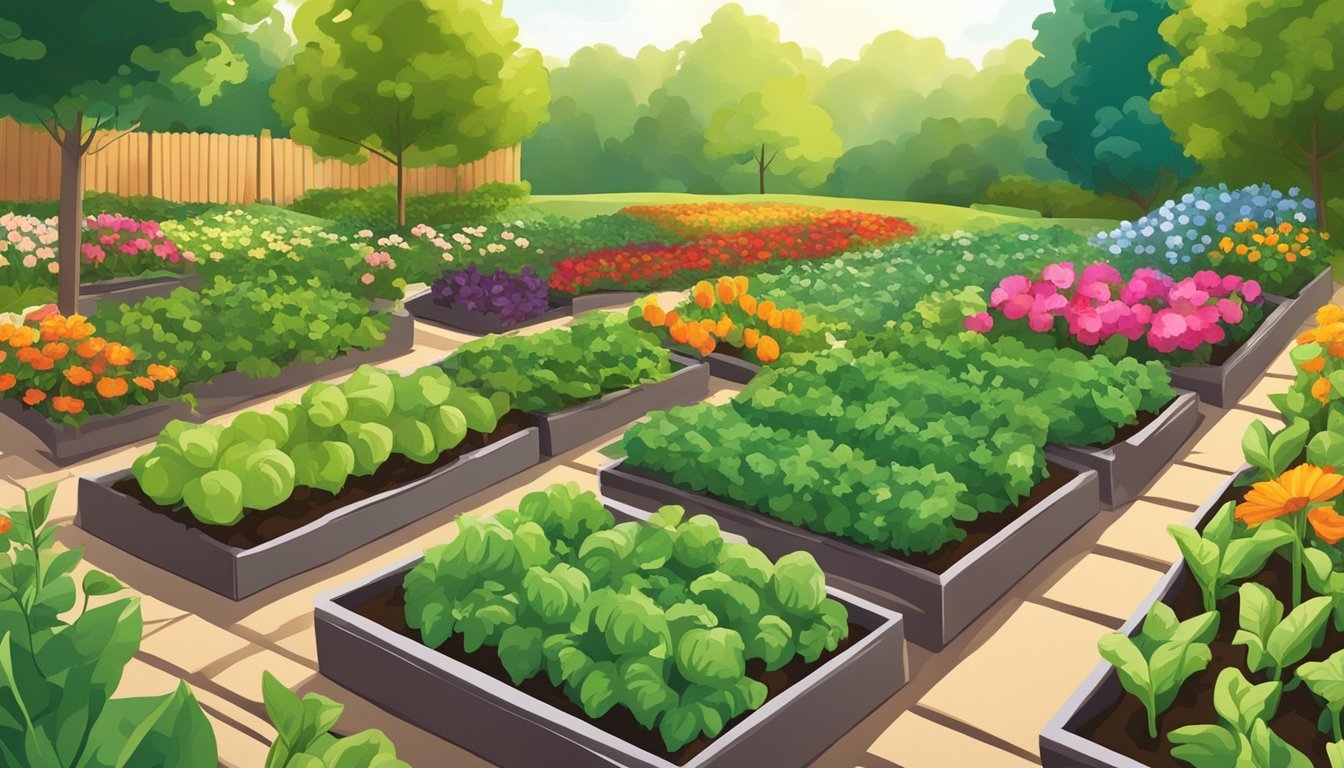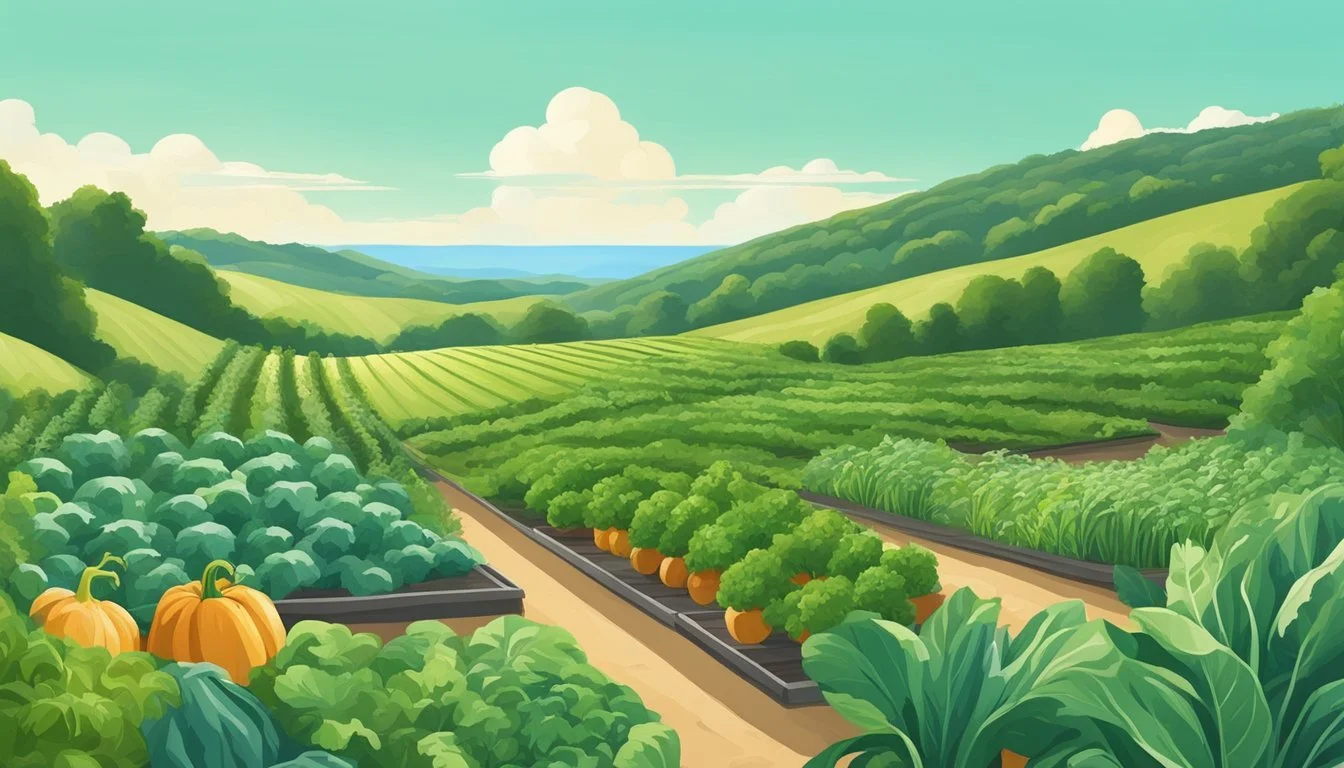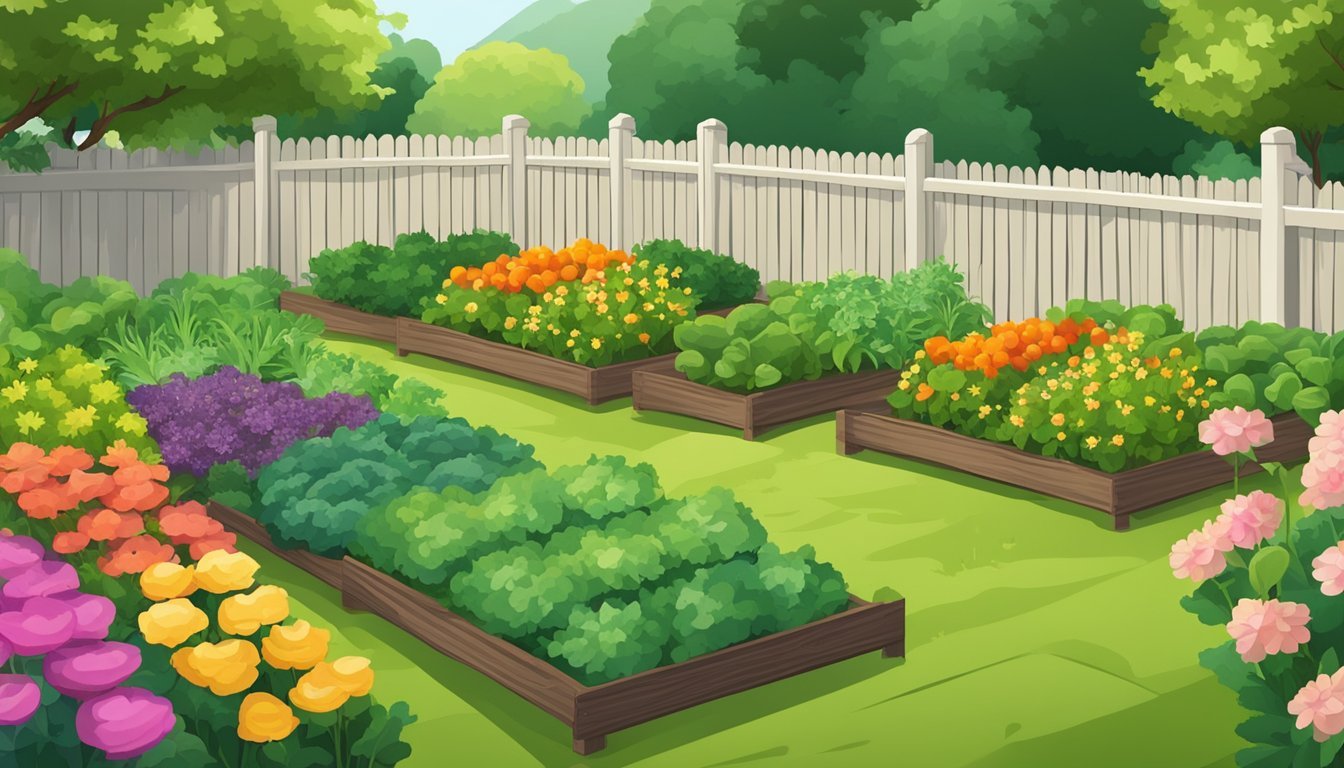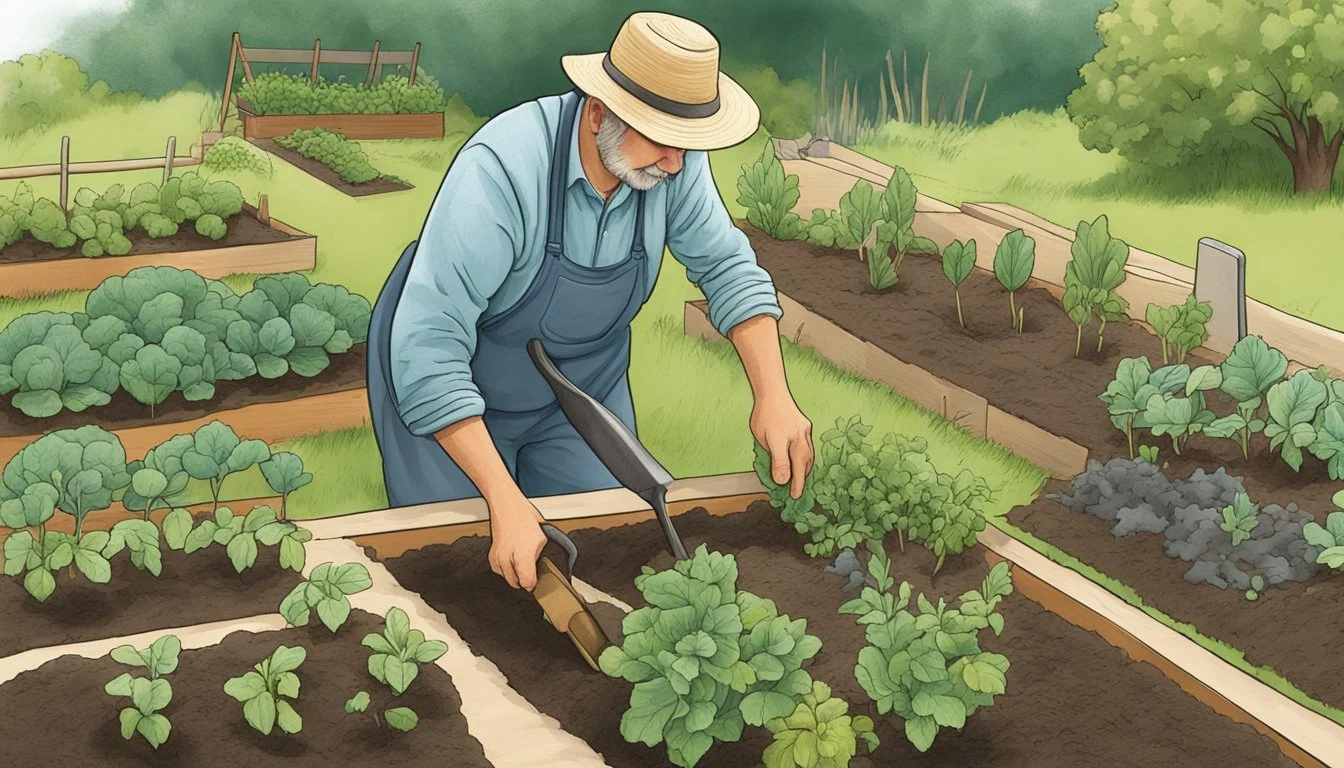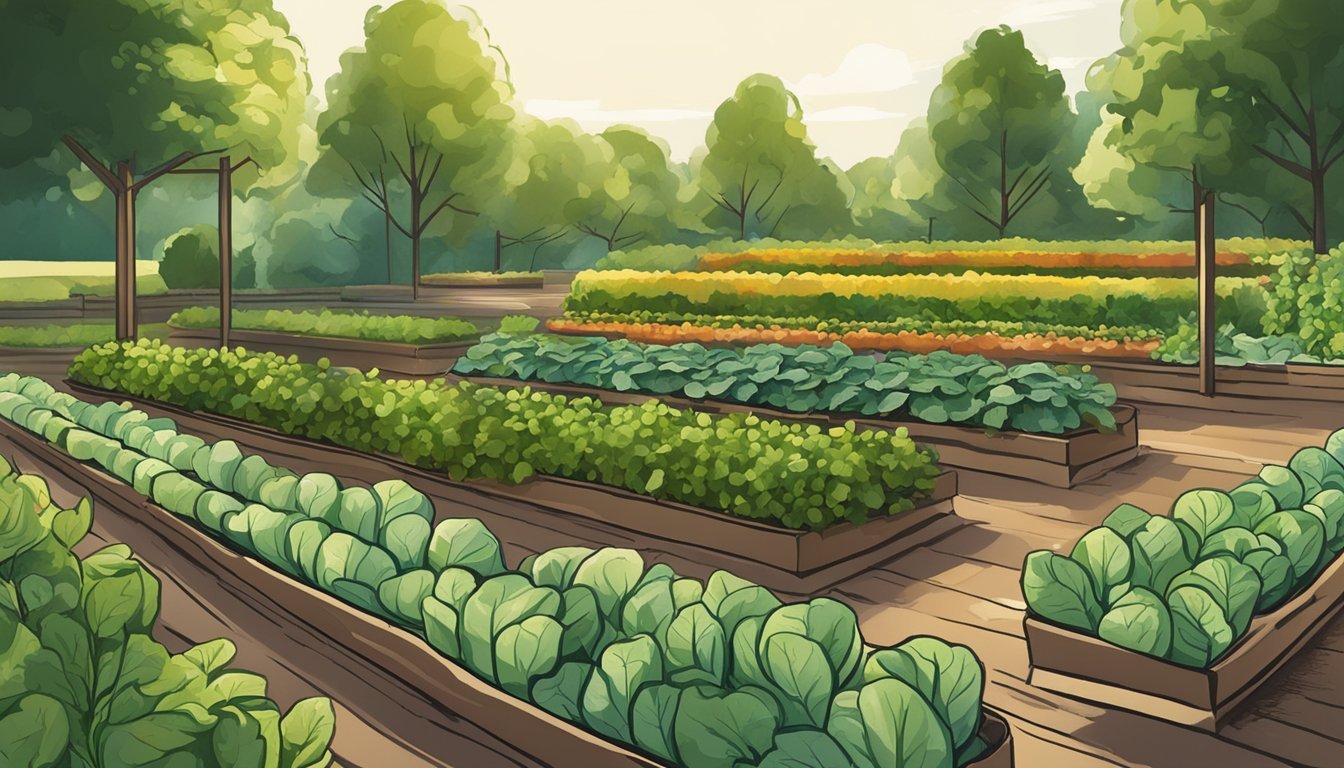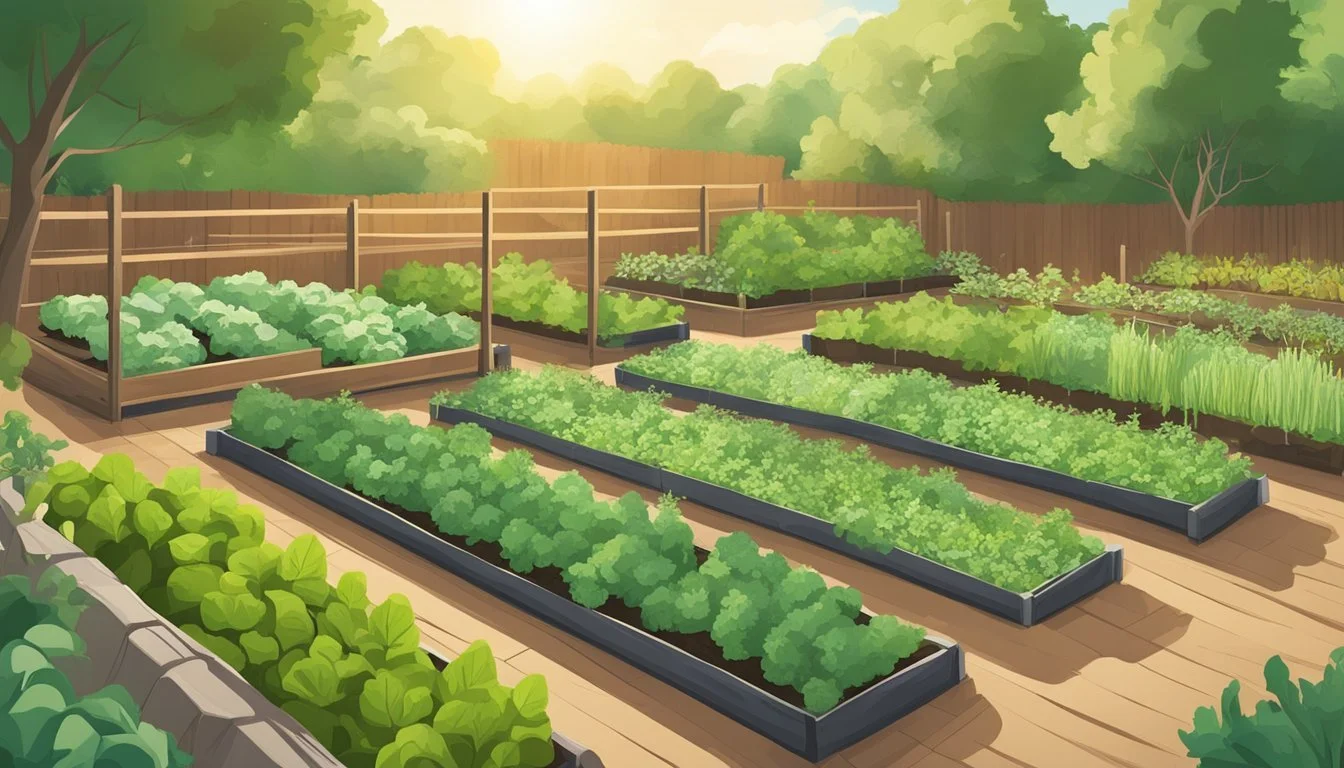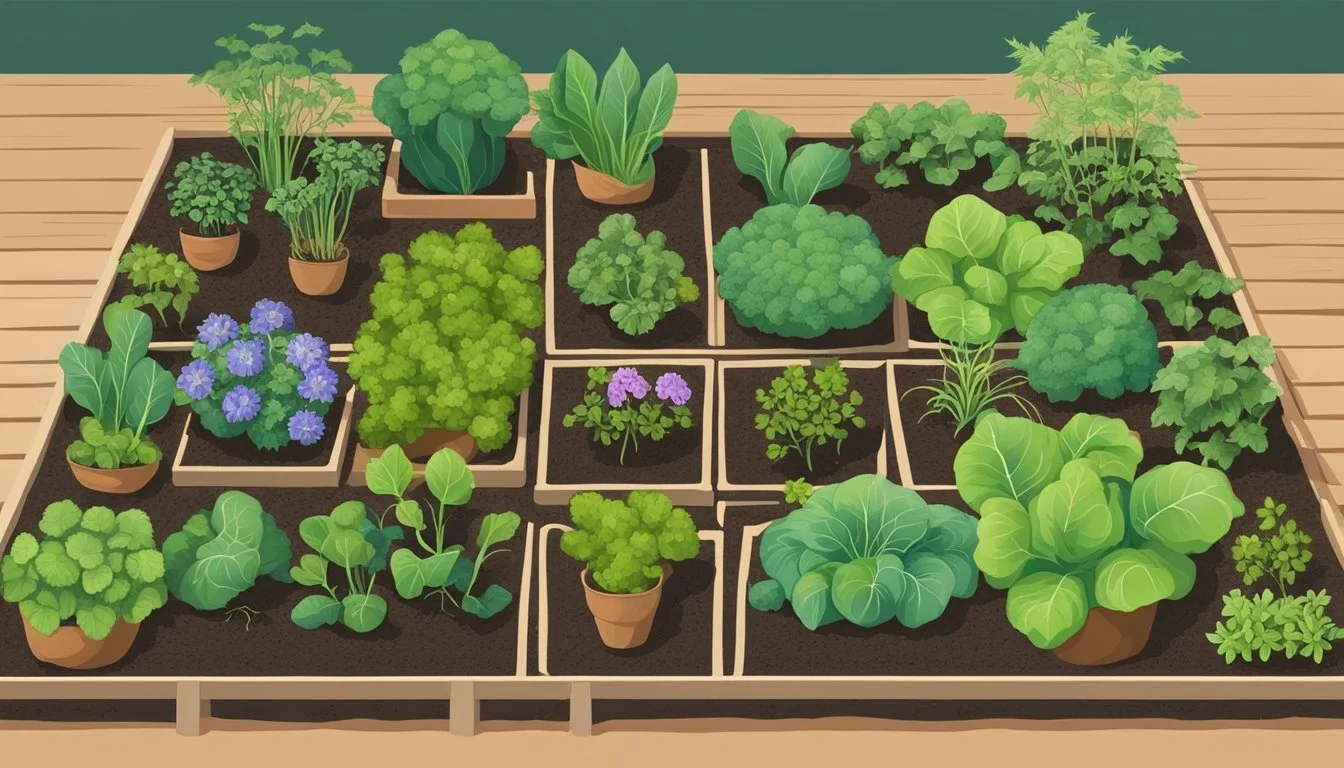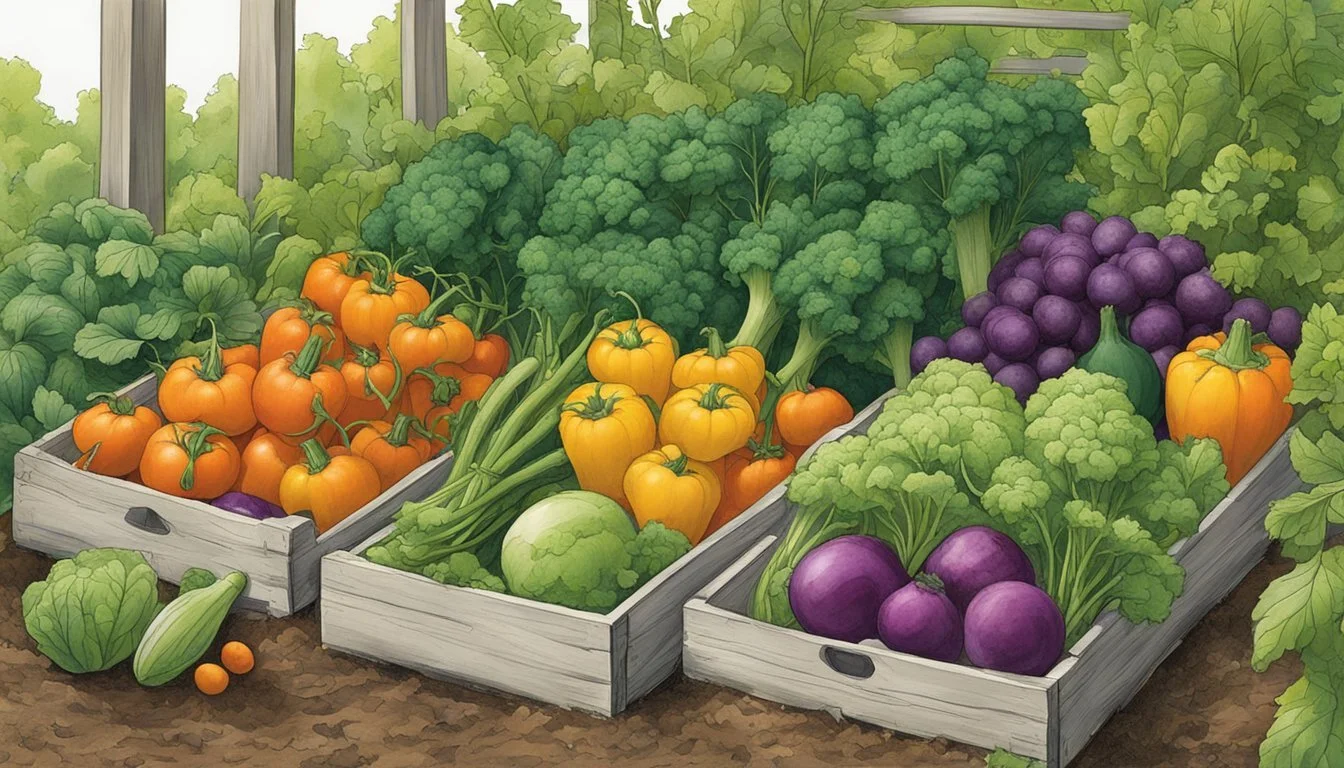Vegetable Gardening in Rhode Island
A Practical Guide for Beginners
This Article is Part of Our Guide on Vegetable Gardening by State
Vegetable gardening in Rhode Island offers a unique opportunity for enthusiasts and hobbyists alike to cultivate a wide variety of plants suited to the New England climate. The state's diverse weather patterns, characterized by cool, wet springs and falls, create an environment where certain vegetables thrive. Gardeners in Rhode Island can take advantage of the extended growing season for cold-hardy vegetables, such as lettuce, which can be vulnerable to pests like slugs, especially when planted in shaded, moist areas.
Due to its geographical location, the state experiences relatively mild summers, making it ideal for growing a range of vegetables that might struggle under extreme heat. Cultivars such as eggplant (how long does eggplant last?), tomato, beans, peas, spinach, and lettuce are among the best choices for Rhode Island gardens. These plants not only adapt well to local conditions but also contribute to a sustainable home garden through providing fresh, homegrown produce.
Careful planning is essential in Rhode Island when it comes to pest management, as local wildlife such as deer, rabbits, and squirrels can pose a threat to fruit and vegetable gardens. Strategies for protecting gardens from these animals, as well as from common insects, are critical to ensure successful harvests. With the right knowledge and practices in place, vegetable gardening in Rhode Island can be a rewarding endeavor that yields plentiful and varied crops.
Understanding Rhode Island's Climate
Rhode Island's climate directly impacts the success of garden plants, with varying conditions across different regions of the state influencing both planting and harvesting times. Understanding the state's weather patterns and USDA Hardiness Zones, as well as the optimal planting dates and frost dates, is essential for gardeners.
Weather Patterns and Gardening in Rhode Island
Rhode Island experiences a humid continental climate, typified by cold winters and warm summers. Gardeners must consider these conditions, especially the length of the growing season, which is impacted by first and last frost dates. Summer warmth can accommodate a variety of vegetables, while cold winters require choosing hardy plants or using season extension techniques.
USDA Hardiness Zones in Rhode Island
The state spans several USDA Hardiness Zones:
Zone 5: Characterized by an average minimal temperature ranging from -20 to -10°F.
Zone 6: Zone 6 regions have average minimum temperatures between -10 and 0°F.
Zone 7: Experiences warmer conditions, with average low temperatures between 0 and 10°F.
These zones are crucial for determining which plants will thrive in a gardener's specific location.
Optimal Planting Dates and Frost Dates
Planting dates in Rhode Island vary by hardiness zone:
Zone 5: The growing season starts later, with an average last frost date in late April to early May.
Zone 6 & 7: These zones may have earlier last frost dates, allowing for an extended growing season.
Gardeners should be aware of the average first frost date in fall to anticipate when to prepare plants for winter. Monitoring local frost dates is important for ensuring a garden's success throughout the season.
Selecting the Right Location for Your Garden
When starting a vegetable garden in Rhode Island, one must carefully consider the location. Key factors such as sunlight exposure, soil quality, and water management are crucial for plant health and yield.
Assessing Sunlight and Shade
Most vegetables need 6 to 8 hours of direct sunlight per day to thrive. Gardeners should observe potential garden plots throughout the day to determine the duration of full sunlight exposure. Areas receiving less sunlight can still be utilized for crops that tolerate partial shade, such as leafy greens and root vegetables.
Soil Type and Quality
Soil quality is paramount for a bountiful garden. Rhode Island gardens flourish best in loamy, well-draining soil with a pH between 6.0 and 7.0. Gardeners should conduct a soil test before planting to determine pH levels and nutrient content. Amendments like compost can be added to improve soil fertility and structure.
Ideal Soil Types for Rhode Island:
Sandy Loam
Silt Loam
Clay Loam (with proper amendments)
Water Retention and Drainage
Vegetable gardens require consistent moisture levels without waterlogging. Effective water retention can be balanced with proper drainage to prevent plant roots from becoming water-saturated. To assess drainage, one may dig a hole approximately 12 inches deep and fill it with water, noting how quickly it drains. If the water takes longer than an hour to drain, soil amendments like organic matter or sand can help enhance drainage.
Planning Your Vegetable Garden
When planning a vegetable garden in Rhode Island, a gardener should focus on selecting appropriate crops, timing plantings correctly, and designing the garden layout for success.
Choosing Vegetables Suitable for Rhode Island
The fluctuating climate of Rhode Island, with its cold springs and cooler fall months, greatly influences which vegetables thrive. Some of the best vegetables to grow in Rhode Island include:
Lettuce: Varieties such as Butterhead and Loose Leaf are cold-hardy and low-maintenance.
Spinach: This leafy green is another cool-season crop that performs well in Rhode Island.
Tomatoes and Eggplants: These warm-season crops can be grown successfully when planted after the last frost.
Root Vegetables: Carrots and radishes are suitable for the local climate.
Legumes: Beans and peas can be grown in both spring and fall.
Creating a Planting Schedule
A strategic planting schedule is essential for maximising yield in Rhode Island's growing seasons. Below is a planting timetable for key vegetables:
Vegetable Indoor Starting Outdoor Planting Notes Lettuce February As soon as soil can be worked Frost resilient Tomatoes March After last frost Requires warm soil Carrots N/A April Can handle light frost Beans N/A After last frost Needs warm, frost-free soil Spinach February Early spring Prefers cool temperatures
Garden Layout and Design
The layout of the garden should incorporate considerations for light, water drainage, and plant spacing. For Rhode Island, raised beds or container gardening can provide better control over soil conditions and extend the growing season. Gardeners should plan for succession planting, which involves staggered planting intervals to ensure continuous harvest.
Key design considerations include:
Sun Exposure: Most vegetables require at least six hours of direct sunlight.
Soil Quality: Amend soil with compost to improve fertility and drainage.
Spacing: Proper spacing helps prevent disease and encourages healthy growth.
Companion Planting: Certain plants can be grown together to deter pests and improve yields.
Preparing the Garden
Preparing the garden in Rhode Island requires specific attention to soil quality, bed construction, and timing for seedlings due to the state's climate. Focusing on these aspects ensures a successful vegetable garden.
Soil Amendments and Composting
Soils in Rhode Island benefit greatly from the addition of compost. This organic matter improves soil structure, nutrient content, and drainage capabilities. Gardeners should integrate a 2-3 inch layer of compost into the top 6-8 inches of soil before planting. Devising a composting strategy can be done as follows:
Materials: Combine green (nitrogen-rich) and brown (carbon-rich) materials in roughly equal parts.
Aeration: Regularly turn the compost pile to increase oxygen flow and speed up decomposition.
Moisture: Maintain compost moisture similar to a wrung-out sponge.
Establishing Raised Garden Beds
Raised garden beds offer numerous benefits, including improved drainage and soil quality, and they can extend the growing season by warming up more quickly in spring. For constructing raised beds, one should consider:
Dimensions: Ideal height is 6-12 inches, width not exceeding 4 feet to allow easy reach, and length as per space availability.
Materials: Untreated wood, stone, or commercial kits are good options for building the structure.
Placement: Ensure beds are positioned in a location that receives ample sunlight and is convenient for watering.
Starting Seeds Indoors
Starting seedlings indoors is critical for maximizing Rhode Island's short growing season. Gardeners should begin 4-8 weeks before the last frost date using these guidelines:
Containers: Use seed trays, peat pots, or recycled containers with drainage holes.
Soil: Sterile seed starting mix helps prevent disease and provides an appropriate growth medium.
Timing: Consult a local planting calendar for specific dates to start different vegetable seeds.
By emphasizing proper soil preparation, raised bed construction, and timely indoor seed starting, gardeners in Rhode Island can effectively establish a vegetable garden adapted to their unique growing conditions.
Planting Techniques and Tips
Successful vegetable gardening in Rhode Island involves strategic planting techniques that cater to the local climate conditions, specifically hardiness zones 6 and 7. Gardeners should focus on best practices for sowing, crop management, soil health, and irrigation.
Direct Sowing Versus Transplanting
Direct Sowing:
Ideal for crops like carrots and radishes that prefer not to be transplanted.
Recommended to be done after the last frost date when the soil is workable.
Transplanting:
Useful for crops like tomatoes and eggplants, which require a longer growing season.
Allows for an earlier start in the season, as seedlings are grown indoors before being moved to the garden.
Zone Consideration:
In Rhode Island, zones 6 and 7, transplants should be hardened off gradually to acclimate to outdoor conditions.
Succession Planting and Crop Rotation
Succession Planting:
Planting lettuce every two weeks ensures a continuous harvest.
This method can extend the growing season and maximize garden space productivity.
Crop Rotation:
Rotating where vegetables are planted each year prevents disease and manages soil nutrients.
A three-year rotation cycle is effective in minimizing pests and diseases.
Mulching and Watering Best Practices
Mulching:
Applying a layer of mulch preserves moisture, regulates soil temperature, and deters weeds.
Organic mulches like straw can add nutrients to the soil as they decompose.
Watering:
Providing consistent moisture, especially during dry spells, is essential for vegetable gardens.
Watering deeply and less frequently encourages strong root development.
Protecting from Elements:
In zone 5, which borders parts of Rhode Island, using mulch and netting can protect plants from extremes in temperature and pests.
Growing Popular Vegetables in Rhode Island
In Rhode Island, gardeners can achieve productive vegetable gardens by understanding the specific needs of their plants and the region's unique growing conditions.
Caring for Leafy Greens and Lettuce
Leafy greens, such as kale, spinach, and collard greens, along with lettuce, thrive in the cooler spring and fall months. They prefer partial to full sunlight and moist, fertile soil. For lettuce:
Plant seeds 1/4 inch deep and space them 1 inch apart.
Ensure consistent watering to keep the soil evenly moist.
Harvest loose-leaf varieties by picking outer leaves as they mature.
Tips for Growing Root Vegetables
Root vegetables like carrots, radishes, parsnips, and onions require deep, well-draining soil free from rocks and debris. For success:
Plant carrot seeds at a depth of 1/4 inch and thin them to about 3 inches apart once seedlings have sprouted.
Radishes can be harvested early and are great companion plants for carrots, repelling pests.
Maximizing Yield for Peas and Beans
Peas and beans are climbers, so providing sturdy supports like trellises or stakes is essential for maximizing yield. They require:
Green beans: Plant 1 inch deep and about 2 inches apart; use rows 18 inches apart.
Peas: Plant in early spring, as they prefer cooler temperatures.
Both need regular watering, especially when the plants are flowering and producing pods.
Growing Tomatoes and Peppers Successfully
To grow tomatoes and peppers effectively, they need warm soil, plenty of sun, and protection from wind. Here are key tips:
Start seedlings indoors 6-8 weeks before the last frost.
When transplanting, bury stems deeply to encourage root growth.
Use stakes or cages to support the plants as they grow.
For peppers, maintain evenly moist soil and avoid overwatering to prevent issues like blossom end rot.
Herb Gardening in Rhode Island
Herb gardening is a rewarding endeavor for Rhode Island gardeners, offering culinary and aromatic benefits. The state's climate is conducive for a variety of herbs, each with its own growth habit and cultivation requirements.
Best Herbs to Cultivate
Rhode Island's growing conditions are ideal for herbs such as dill (how long does dill last?), which thrives in sunny locations, and garlic, a hearty perennial. Additionally, basil and parsley are annual herbs that perform well and can be easily incorporated into seasonal cooking. For best results, these herbs should have well-draining soil and adequate sunlight:
Dill: Full sun; plant seeds directly in the ground after frost.
Garlic: Full sun; plant cloves (how long do cloves last?) in fall for a summer harvest.
Basil: Full sun to partial shade; best started indoors and transplanted.
Parsley: Full sun to partial shade; consistently moist soil.
Herbs for Small Spaces and Containers
For those with limited garden space or who prefer container gardening, certain herbs are particularly well-suited. Chives (how long do chives last?), thyme, and lemongrass can grow effectively in pots, making them perfect for balconies or patios. When planning for small spaces:
Chives: They require little room and can be harvested frequently.
Thyme: It's drought-tolerant once established, thriving in containers.
Lemongrass: Select a large pot and ensure it receives ample sun and moisture.
Perennial Herbs for Rhode Island Gardens
Perennial herbs are a mainstay in the Rhode Island garden, coming back year after year. Mint, sage, and lavender are reliable perennials, each offering unique flavors and fragrances. These perennials are suited to the Rhode Island climate and offer extended harvests:
Mint: Prefers partial shade and moist soil; can be invasive so contain it.
Sage: Enjoys full sun and well-draining soil; cold-hardy.
Lavender: Best in full sun with well-draining soil; promotes pollination.
Pest and Disease Management
Effective pest and disease management are crucial for a successful vegetable garden in Rhode Island. This section explores proven strategies for identifying pests, preventing diseases, and using organic control solutions.
Identifying and Controlling Common Pests
In Rhode Island gardens, common pests like aphids can significantly impact vegetable production. One begins by inspecting plants regularly for signs of pests, such as distorted growth or sticky residue indicative of aphid presence. Controlling these pests includes manual removal, the application of water sprays, or the introduction of beneficial predators like ladybugs. For instance, an aphid infestation on lettuce can be curbed by:
Physical removal: Gently wiping off the aphids with a damp cloth.
Water spray: Using a garden hose to dislodge aphids from plants.
Preventive Measures Against Diseases
Preventing diseases starts with cultural practices such as crop rotation and proper sanitation to avoid the build-up of pathogens. Choosing resistant varieties and ensuring adequate plant spacing for air circulation also reduces the risk of diseases. Gardeners should always:
Rotate crops: Avoid planting the same vegetable family in the same spot each year.
Clean tools: Disinfect garden tools to prevent the spread of diseases.
Organic Pest Control Solutions
Organic pest control emphasizes the use of non-chemical methods to manage garden pests. These solutions include barriers such as row covers to protect plants from pests and homemade sprays like neem oil or insecticidal soap to control infestations. Gardeners should consider:
Row covers: Install to protect against moth and beetle larvae.
Neem oil: Apply as a natural insecticide to deter pests without harming beneficial insects.
Harvesting and Storage
In Rhode Island, the key to successful vegetable gardening is knowing when and how to harvest, as well as the best methods for storing produce to maintain its freshness.
Determining Harvest Times
Lettuce, for instance, is ready for harvest when the leaves are tender and of a desirable size, typically before they reach full maturity to ensure optimal flavor and texture. Root vegetables like carrots and radishes are often ready when their tops peak through the soil surface. For the best harvesting times, one should note the days to harvest provided on seed packets, as these offer an approximate timeline for when vegetables are ripe for picking.
Proper Techniques for Harvesting Vegetables
When harvesting, it's important to use the right technique for each type of vegetable to avoid damage and ensure plant health. Lettuce leaves can be picked individually or the whole plant can be cut at the base. Root vegetables should be gently pulled or dug up to prevent bruising. Beans and peas need a steady hand to avoid over-pulling and damaging the plant, as they will continue to produce if harvested regularly.
Storing Vegetables to Maintain Freshness
To maintain freshness after harvest, proper storage is essential. Most leafy greens, like lettuce, should be washed, dried thoroughly, and stored in the refrigerator in a plastic bag or container. Root vegetables can be kept in a cool, dark place with good humidity to prevent them from drying out. For extended storage, some vegetables can be blanched and frozen to preserve their quality.
By adhering to these guidelines, gardeners can enjoy the bounty of their Rhode Island gardens well beyond the growing season.
Extending the Growing Season
In Rhode Island, gardeners often use various techniques to protect their crops from the unpredictable New England weather and extend the growing season. They employ strategies such as implementing structures to retain warmth and defending against unexpected temperature drops.
Using Cold Frames and Greenhouses
Cold frames and greenhouses are essential for gardeners looking to extend the vegetable growing season in Rhode Island. A cold frame, typically made with a wooden or metal frame and a transparent lid, helps cold hardy vegetables thrive by shielding them from harsh conditions and maintaining a more consistent internal climate. These structures allow for an earlier start in the spring, often before June, and can protect plants into the colder months.
Advantages:
Enables earlier planting of seeds and seedlings
Provides a warmer microclimate for growth
Greenhouse Considerations:
Opt for polycarbonate panels or glass for longevity
Ensure proper ventilation to regulate temperature and humidity
Protecting Plants from Early Frosts
As autumn approaches, the threat of early frosts can jeopardize the harvest. Gardeners can protect their plants by using plastic sheets or garden fabric to cover crops during the night. This simple barrier traps heat and prevents the cold air from damaging sensitive plants.
Method:
Drape the plastic sheet or fabric over the plant, ensuring it does not touch the foliage
Use stakes or frames to create a support structure that keeps the covering above the plants
Best Practice: Remove the coverings during the day to allow light in and to prevent overheating as daytime temperatures rise.
Community and Urban Gardening
Community and urban gardening initiatives in Rhode Island provide valuable opportunities for residents to engage in growing fresh produce. Rhode Island cities, including Providence, Central Falls, Cranston, Kingston, and Bristol, have embraced the concept of community gardens, transforming small spaces into vibrant areas for cultivating veggies and fostering community engagement.
Participating in Community Gardens
Community gardens in Rhode Island offer plots where individuals can rent space for a season to plant vegetables and flowers. Providence is notable for its network of community gardens, such as those organized by Southside Community Land Trust, with numerous sites like the Edgewood Community Garden. In Central Falls, residents participate in community gardening to grow fresh produce in often limited urban spaces.
Providence: Home to multiple community gardens, providing fresh produce and community engagement.
Example: Session Street Community Garden—established in 2007, has around 30 gardening families.
Central Falls: Utilizes community gardens to maximize small urban spaces for residents to grow food.
Other Cities: Cities like Cranston, Kingston, and Bristol also participate in community gardening efforts, underscoring the widespread adoption across the state.
Vegetable Gardening in Urban Areas
Vegetable gardening in urban areas addresses both the desire for fresh, locally-sourced food and the need for green spaces within Rhode Island cities. This form of urban agriculture is crucial in locations with limited access to fresh, high-fiber produce. Gardens vary in size and often occupy vacant lots or repurposed land.
City Utilization: Vacant lots and church lawns are often turned into community gardens in urban locations.
Produce Focus: Emphasis on growing vegetables rich in fiber and other nutrients.
Space Optimization: Innovative methods are used to maximize yield in small spaces, which is essential in urban settings like Kingston and Bristol.
Through community and urban gardening, Rhode Island residents have found meaningful ways to connect with their food and neighbors while making valuable use of limited land in urban environments.

